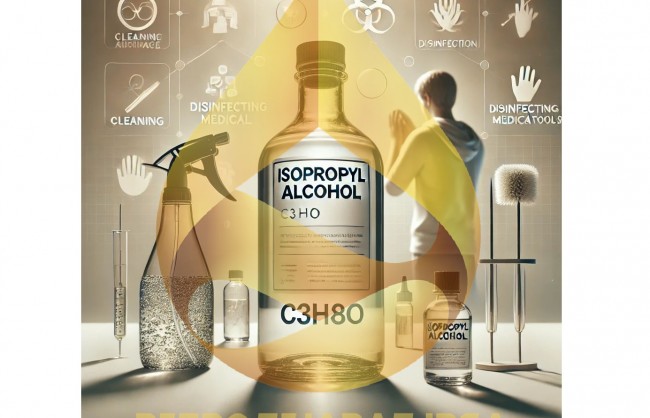


One of the most important categories of chemical substances is solvents. Solvents are typically volatile liquids with high vapor pressure. This group is an inseparable part of the paint and resin industry, as they play a role in adjusting viscosity, controlling the final drying time of the paint film, brushability, sprayability, and other end-product properties such as density, final color, moisture content, pH, refractive index, etc.
The classification of solvents can be done based on solubility, intramolecular bonds, boiling point ranges, and more. However, solvents used in the paint industry are generally categorized into five main groups based on their active ingredients and chemical structure:
1. Terpenes
2. Hydrocarbons (naphthenic, aliphatic, aromatic)
3. Oxygenated solvents (alcohols, ethers, ketones, esters)
4. Nitroparaffins
5. Chlorinated solvents
One of the most important solvent groups in the industry, according to the above classification, is alcohols (compounds containing hydroxyl groups, OH). Alcohols can be saturated and unsaturated aliphatic or cyclic, and in the paint industry, aliphatic alcohols are more commonly used. Factors such as chain length and the number of hydroxyl groups affect the final properties of alcohols. In general, a single hydroxyl group results in alcohol, two hydroxyl groups form glycols, and three hydroxyl groups form polyols or glycerol. Below, we will introduce one of the most commonly used oxygenated solvents, the second type of alcohol, isopropyl alcohol.
Isopropyl Alcohol One of the most widely used aliphatic alcohols, isopropyl alcohol, is also known as isopropanol and 2-propanol. It is a colorless liquid with a relatively sharp odor and a relatively low boiling point. Isopropyl alcohol is miscible with polar solvents such as water, ethanol, benzene, chloroform, etc., but it is not soluble in salt-containing solutions. It was first discovered by the English scientist Alexander William Williamson, who also conducted extensive studies on esterification, which earned him the Royal Medal. Isopropyl alcohol is produced by the hydration of propene in the presence of concentrated sulfuric acid or by hydrogenation of acetone.
Applications Isopropyl alcohol has a wide range of applications:
Paint, Resin, and Printing Industry: Producing acetone, industrial paint removers, maintaining water temperature in the printing industry, producing marine paints and antifouling paints, epoxy primer for concrete, two-component semi-polyester lacquer, thinner for paint and resin, and producing various types of thinners such as wash primer, epoxy thinner, ethyl silicate primer, quick-drying paint.
Production of Cleaners and Disinfectants: Producing glass cleaners, hand sanitizers, soaps, and antibacterial lotions.
Cosmetics: Hair sprays and styling agents, nail polish, nail polish removers, makeup removers, skin toners, aftershave, lotions, perfumes, body sprays, and deodorants. It acts as a solvent for aromatic oils, helps distribute fragrance evenly, increases drying time, and leaves skin feeling fresh and non-greasy.
Medical, Pharmaceutical, and Laboratory: Preserving biological samples, producing antibiotics, diluting test samples, disinfecting laboratory equipment and surfaces, as it destroys a significant number of bacteria and other contaminants.
Agriculture: Agricultural pesticides.
Automotive Industry: As an automotive fuel additive, producing windshield cleaners.
Other Uses: In the production of computer components, adhesives, food packaging.
Safety Notes Since this substance is used in the cosmetic, pharmaceutical, and sometimes food industries, it should be noted that it is generally not edible unless in specific grades and within permissible doses. Ingesting even small amounts can lead to fatal risks. The lethal dose of isopropyl alcohol for adults has been reported as 8 ounces, and many people who survived drinking isopropyl alcohol have gone blind permanently. This type of alcohol is metabolized differently than other edible alcohols.
According to the global classification of chemicals under the GHS method, isopropyl alcohol is classified in Category 4 for acute skin/inhalation toxicity, Category 2 and 3 for skin irritation, Category 2A for eye irritation, Category 1 for skin sensitization, and Category 3 for organ toxicity with a single exposure. In terms of flammable gas production, it is categorized in Class 1, and for flammable liquids, it falls into Classes 1, 2, 3, and 4.
Global Market Volume In 2015, the global market volume for isopropyl alcohol was 2.03 million cubic meters, and it is projected to increase by 22% to 2.47 million cubic meters by 2024. It is expected to reach 2.88 million cubic meters by 2030, representing a 17% increase from 2024.